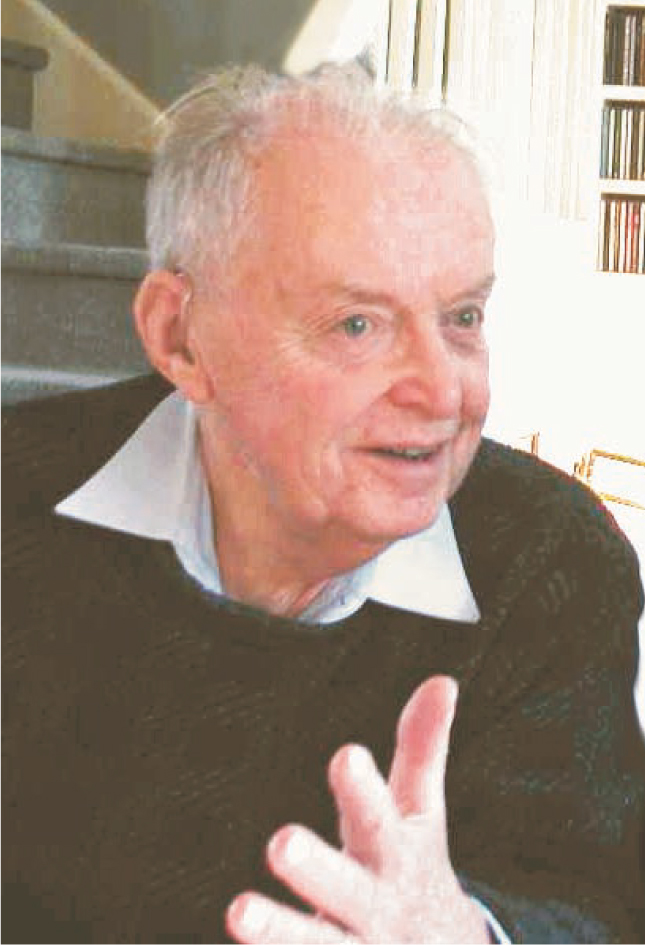Jean-Loup Delcroix
DOI: 10.1063/1.1784314
Jean-Loup Delcroix, a renowned plasma physicist, teacher, and research administrator, died from a heart attack on 22 May 2003 in Arpajon, France.
Born on 15 July 1924 in Voiron, France, Delcroix was admitted at age 20 to the prestigious École Normale Supérieure in Paris. In 1948, he was top-ranked in the Agrégation de Physique. He earned his doctorate in 1953, under the supervision of Albert Boutry, with a thesis on space charge effects in magnetrons. After receiving his degree, he elected to pursue a career in university teaching and research in plasma physics.
In 1960, Delcroix was named professor at the University of Paris at Orsay; he remained in that position until his retirement in 1992. His specialty was the physics of weakly ionized plasmas and, in particular, the kinetic theory of the Lorentz gas. The same year he joined Orsay, he formed the Laboratoire de Physique des Gaz et des Plasmas (LPGP), a university laboratory associated with the CNRS; he directed the lab until 1984. He made important contributions to the development of low-temperature, nonequilibrium plasma physics and to modern gas discharge physics. During the early 1970s, he also created a research group on discharges in atomic and molecular gases. That group contributed to gas laser physics and other applications.
In parallel with his research and leadership at the LPGP, Delcroix created in 1960, at Orsay, a plasma physics curriculum at the graduate level of the Diplôme d’Études Approfondies (DEA), the first in France in this specialty. That curriculum was later used as a model at other universities in France. His lectures on the fundamentals of plasma physics formed the basis for three monographs he published in 1959, 1963, and 1966, respectively. With Jean-François Denisse, he published a seminal research monograph on waves in plasmas in 1961. Through his efforts in research and teaching, plasma physics became recognized and accepted as a physics discipline in its own right. Delcroix’s students and associates remember him as a well-organized, brilliant, and passionate teacher of plasma physics and appreciated his charismatic personality and scientific accomplishments.
Delcroix fostered the development of relationships between US plasma physicists and their counterparts in France. For example, he periodically invited his US colleagues, including one of us (Bers), to visit, give seminars, collaborate on many aspects of research at the LPGP, and participate in teaching plasma physics at the University of Paris at Orsay. He and Bers wrote a two-volume textbook entitled Physique des Plasmas , which was published in 1994 (InterÉditions/CNRS Éditions).
In addition to his research and teaching, Delcroix held important positions in research and university administration. He was the associate director (1952–57) of the École Normale Supérieure’s Laboratoire de Physique. During the construction of the linear accelerator at Orsay, he was associate director (1955–60) of the Laboratoire de l’Accélérateur Linéaire at the University of Paris. He was named scientific director of the Direction des Recherches et Moyens d’Essai, the French government’s agency for coordinating and developing military research, in 1965 and held that position until 1976. Associates working under his leadership have praised his contributions to the development of highpower lasers there, contributions characterized not only by his solid scientific advice, but also by the caring relationships he developed with his colleagues. They remember him as an open, warm, and persuasive leader.
In 1978, Delcroix became the director of the École Supérieure d’Électricité, an elite school for electrical engineering; he remained at that post until 1989. Under his leadership, the school expanded to three campuses, modernized its curriculum, expanded its social sciences program, and enhanced the cultural activities of its students. He was France’s representative to CODATA from 1982 to 2003 and energetically contributed to the maintenance of European databases in atomic, molecular, and plasma physics. During his retirement, Delcroix continued his scientific endeavors by creating GAPHYOR, a database on atomic and molecular physics, which he continued to maintain with his associates.
Delcroix received many honors and decorations from the French government: Palmes Académiques (1966), Légion d’Honneur (1969 and 1989), and Ordre Nationale du Mérite (1984). He was a founding member of the Académie des Technologies in 2000.
Delcroix enjoyed skiing, tennis, golf, and particularly bridge in his later years. In addition to his scholarly and administrative successes, he had a lively sense of humor and fun. He is remembered as an attentive listener who encouraged all initiatives, no matter how bold they were. We all miss him.

Jean-Loup Delcroix

More about the Authors
Abraham Bers. Massachusetts Institute of Technology, Cambridge, US.
Anne-Marie Pointu. Université de Paris–Sud, Orsay, France.
Jean Bretagne. Université de Paris–Sud, Orsay, France.
